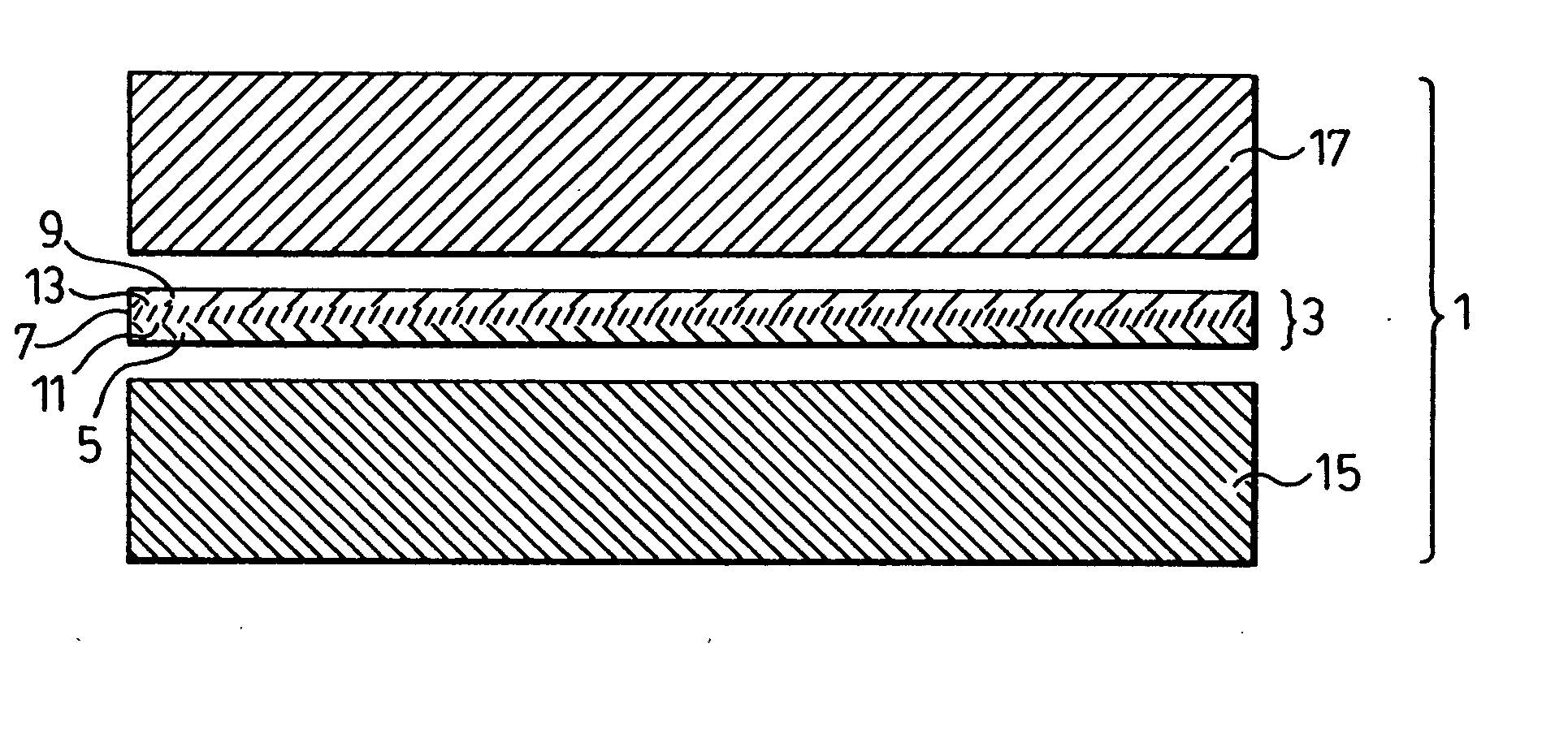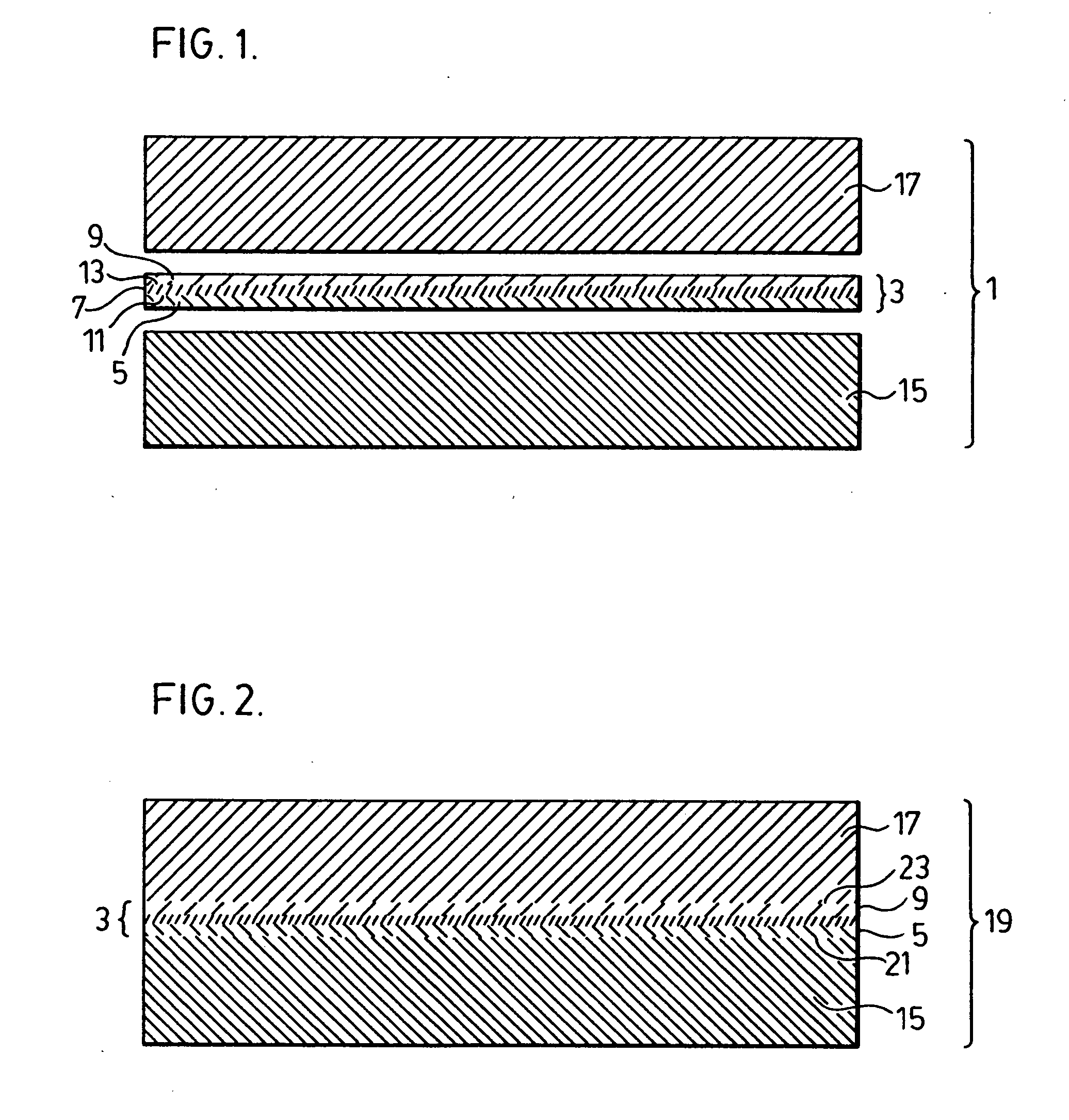Method of producing metal composite materials comprising incompatible metals
a metal composite material and metal technology, applied in the direction of non-electric welding apparatus, welding/cutting media/materials, solvent media, etc., can solve the problems of inability to bind explosively in the final required metallurgical condition, and inability to bind one or both metals at the same time. , to achieve the effect of high strength, suitable mechanical properties and high strength
- Summary
- Abstract
- Description
- Claims
- Application Information
AI Technical Summary
Benefits of technology
Problems solved by technology
Method used
Image
Examples
example 2
[0039] A portion of the same interlayer material produced for Example 1 was interposed between a 16 mm thick plate of stainless steel and a 10 mm thick plate of 6A14V titanium. The carbon steel surface of the composite interlayer being disposed adjacent to the stainless steel plate, with which it is compatible for roll bonding, and the titanium surface of the composite interlayer being adjacent to the 6A 14V titanium alloy.
[0040] This assembly was hot rolled at a temperature of 1050.degree. C. and reduced in thickness to 4.5 mm.
[0041] After rolling, the composite was found to have been effectively bonded to form a composite having exterior surfaces of stainless steel and 6A14V titanium alloy.
[0042] The composite was again heated to 1100.degree. C. without disbanding to prove the effectiveness of the niobium interlayer at its final thickness of 12 microns.
example 3
[0043] Table I in alternative embodiments lists the natures of the two incompatible metals as layer 17 and layer 15 as described with reference to FIGS. 1 and 2 and made as hereinabove described with reference to FIGS. 1 and 2.
1TABLE First Metal (17) Second Metal (15) Composite (3) Ductile steel alloy GA14 V Titanium Carbon Steel / Nb / ductile Ti Lower strength ductile Armoured steel Carbon Steel / Nb / ductile Ti titanium
PUM
| Property | Measurement | Unit |
|---|---|---|
| temperatures | aaaaa | aaaaa |
| thick | aaaaa | aaaaa |
| thick | aaaaa | aaaaa |
Abstract
Description
Claims
Application Information
 Login to View More
Login to View More - R&D
- Intellectual Property
- Life Sciences
- Materials
- Tech Scout
- Unparalleled Data Quality
- Higher Quality Content
- 60% Fewer Hallucinations
Browse by: Latest US Patents, China's latest patents, Technical Efficacy Thesaurus, Application Domain, Technology Topic, Popular Technical Reports.
© 2025 PatSnap. All rights reserved.Legal|Privacy policy|Modern Slavery Act Transparency Statement|Sitemap|About US| Contact US: help@patsnap.com



